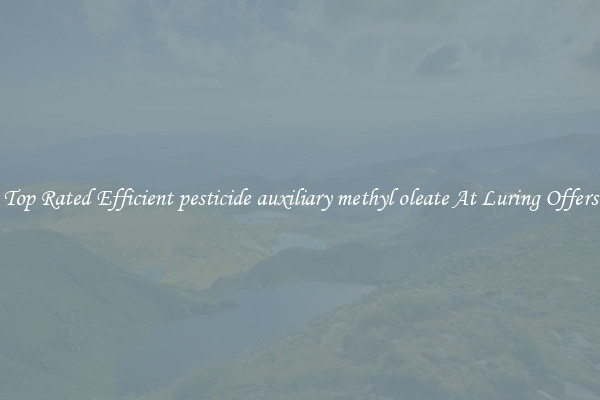Top Rated Efficient pesticide auxiliary methyl oleate At Luring Offers
Pesticides are essential in maintaining healthy crops by controlling pests and preventing crop damage. However, choosing the right pesticide auxiliary is equally important to ensure optimal effectiveness. Among the top-rated pesticide auxiliaries is methyl oleate, known for its efficiency in luring pests away from crops.

Methyl oleate is a fatty acid derived from oleic acid, a naturally occurring substance found in various plant and animal fats. It has been widely used as a pesticide auxiliary due to its ability to attract pests and enhance the effectiveness of pesticides. The compound works by acting as a lure, attracting insects to the treated area and making them more susceptible to the pesticide.
One of the main advantages of using methyl oleate is its high level of efficiency in controlling pests. It has been proven to effectively attract a wide range of insects, including aphids, whiteflies, and thrips. By using methyl oleate as a lure, farmers can significantly reduce pest populations and prevent crop damage.
Additionally, methyl oleate is known for its environmentally friendly properties. It is biodegradable and does not leave harmful residues in the environment, making it a safe option for use in organic farming practices. This makes it a preferred choice for farmers looking to control pests without causing harm to the environment.
Furthermore, methyl oleate is available at luring offers, making it a cost-effective solution for pest control. Farmers can purchase the compound in bulk quantities at competitive prices, ensuring they have an ample supply for their crops throughout the growing season. With its high level of efficiency and affordability, methyl oleate is a top-rated pesticide auxiliary among farmers worldwide.
In conclusion, choosing the right pesticide auxiliary is crucial for effective pest control. Methyl oleate stands out as a top-rated option due to its efficiency in luring pests, environmentally friendly properties, and cost-effective pricing. Farmers can rely on methyl oleate to attract pests away from their crops and prevent damage, ensuring a healthy and thriving harvest.

View details

View details

View details

View details








